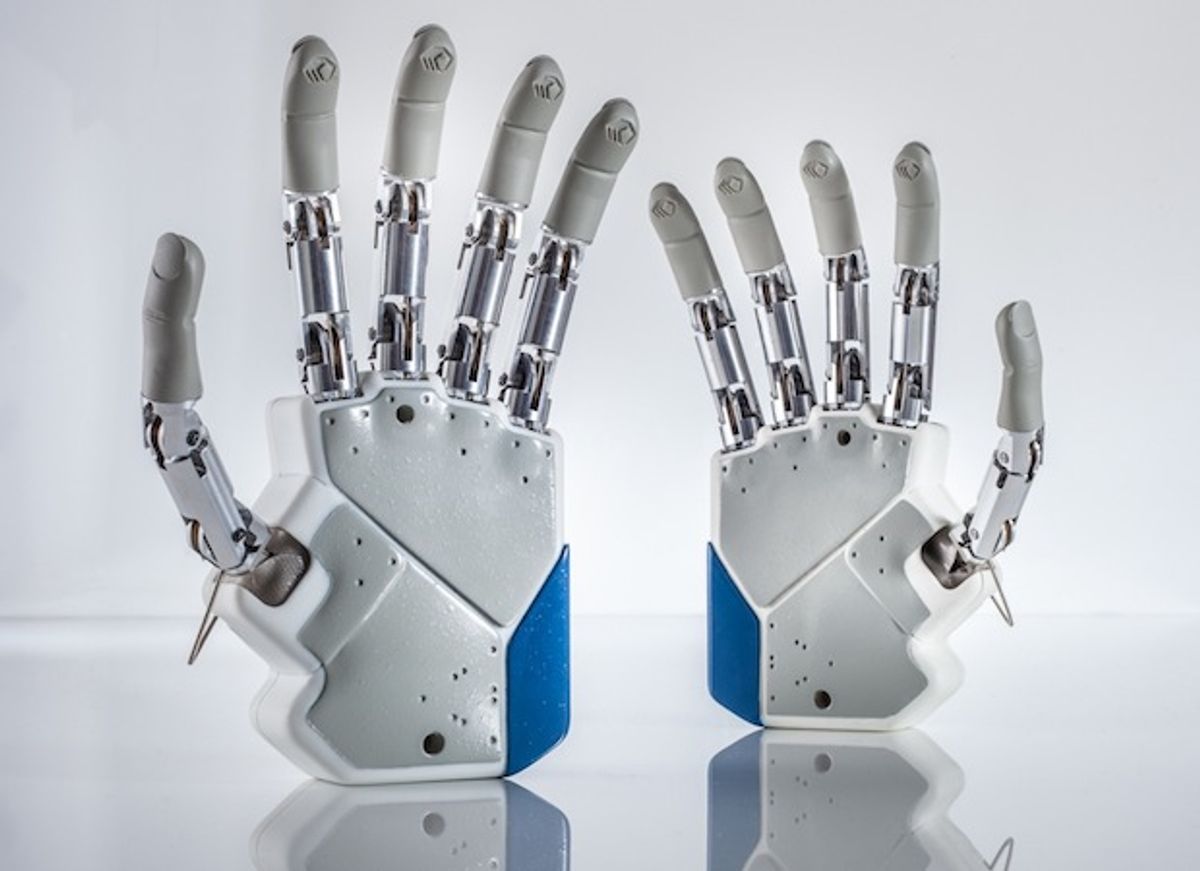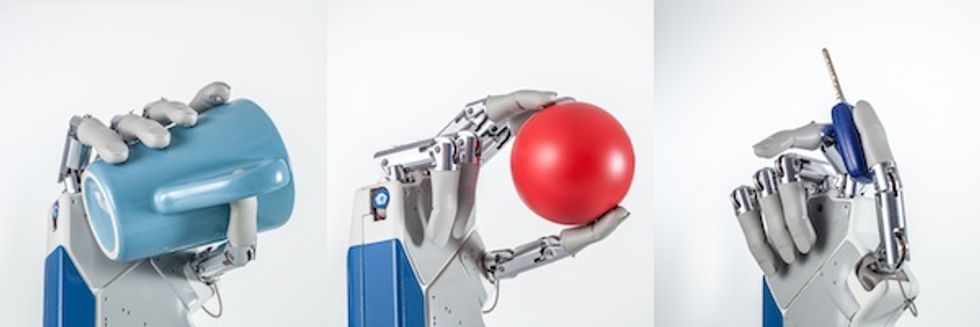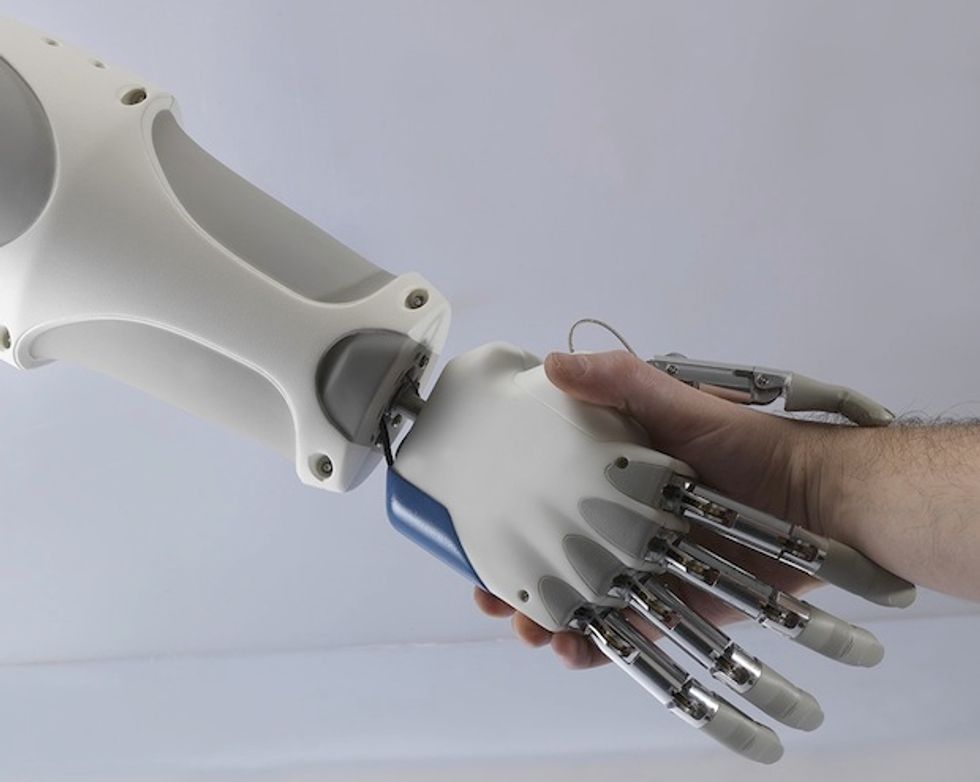This is the fifth post in our Startup Spotlight series featuring new robotics companies from around the world. We’re inviting representatives from these startups to describe their technologies and how they see the marketplace. The views expressed here are solely those of the author and do not represent positions of IEEE Spectrum or the IEEE.
Researchers have long been trying to build robotic hands that mimic the extraordinary capabilities of the human hand. The goal has been a device with size and weight similar to our own hands, capable of performing multiple grasping motions, and powered by advanced controllers. Such robot hands could help to advance important research areas, such as prosthetics, neural engineering, rehabilitation, humanoid robotics, and human-machine interfaces.
At the Scuola Superiore Sant’Anna in Pisa, Italy, a group of researchers has been working on robotic hand technology since the early 1990s, when Prof. Paolo Dario (a former IEEE RAS president and recipient of the Engelberger Award) joined the university.
Startup Spotlight: Prensilia
Founded: 2009
Location: Pisa, Italy
Focus: Anthropomorphic robot hands for research
Founders:Marco Controzzi and Christian Cipriani
Funding:Self funded
Fun Fact:The company’s robotic hand, Azzurra, is named after the color usually worn by Italians in sports events.
It was there that, in 2006, I first met fellow graduate student Marco Controzzi. Marco studied mechanical engineering, and I studied electrical engineering. We both got involved in projects focusing on upper limb prosthetics and humanoid robotics under the supervision of Prof. Maria Chiara Carrozza. In 2008, we developed a robotic hand called the SmartHand. It would become the starting point of Prensilia, the startup we would found the following year.
With this first prototype we demonstrated that dexterous self-contained robotic hands could be built. SmartHand featured all of the required mechanics and electronics embedded in the palm. At that point we realized that sophisticated robot hands could have applications in many different areas and presented real commercial possibilities.
Working further on the SmartHand prototype, we developed our first commercially available robotic hand: Azzurra. Unveiled in 2009, the hand has five motors actuating 11 degrees of freedom. This allows the hand to perform cylindrical, tip, tripod, and lateral grips that, together with basic gestures like counting and pointing, cover 80 percent of human hand grasp capabilities. All of which makes Azzura one of the most advanced intrinsic (self-contained) robotic hands available today. The video and photos below demonstrate its main features:
The key technology in Azzurra is a particular underactuated mechanism (based on what is known as Hirose’s mechanism). By using this mechanism, we are able to reduce the number of motors needed to actuate all degrees of freedom in the hand. In Azzurra, one finger (capable of flexion and extension movements, or two degrees of freedom) is driven by only one motor. It does that by means of a screw/lead screw mechanism that transforms the rotary motion of DC motors into linear motion of a slider, which pulls a tendon to flex/extend the finger.
Another advantage of this mechanism is its intrinsic non-backdrivability. Backdrivability is desirable for a robot arm, for example, because it allows it to have compliance and move more safely near people. For a robot hand, however, a non-backdrivable system means that it can hold the grip even if the motors are switched off, reducing power consumption and increasing safety (a grasp won't fail even in case of power loss). Moreover, while grasping an object, the underactuated mechanism allows for a self-adapting grasp. This approach, in addition to being bio-inspired, increases the number of contact points between the hand and the object enhancing grip stability. This is further improved due to the compliant material used in the distal phalanxes of each finger.
The second main product we developed at Prensilia is a robotic forearm we called the Milano. Its actuation is based on the same mechanism found in Azzurra, but differs from it in that Milano has two additional degrees of actuation used to move a rotating wrist and to enable independent flexion/extension of ring finger and little finger (the two fingers are coupled together in Azzurra).
Being an intrinsic hand, Azzurra is ideal for prosthetics and rehabilitation research, while Milano, with an "extrinsic" design, can adapt better to humanoid robotics (where dimension requirements are not so strict and great flexibility is required). That said, both Milano and Azzurra are anthropomorphic hands equipped with embedded actuation and advanced sensory and control systems, and as such they can be used in all research fields where it is important to have an artificial hand that behaves like a natural one. For example, Azzurra and Milano can be used as advanced prostheses, as end effectors for humanoid robots, or in rehabilitation and neuroscience experiments.
In the near future, we plan to make our robot hands even more capable. For example, we plan to equip the fingertips with sensors that will provide information about force at contact points between the hand and the object. This capability will be extremely useful for both control and prosthetics scenarios by enabling new (and more precise) control algorithms and providing data to sensory feedback devices, which are becoming an important part of research for a growing number of labs around the world.
Our plan is to continue improving our robotic hands, and in particular, we want to develop a dexterous prosthetic hand. We're currently looking for partners and investors who want to join us in this challenge, helping us to build a product to be offered beyond the research and academic markets. We founded Prensilia because we believe that the goal of all research should be to improve people's lives. With our new prosthetic hand, our hope is that robotics can offer real, effective help to amputees who currently rely on devices that are very different when compared to their lost hand.
Christian Cipriani is a cofounder of Prensilia.






